Discover the unique artistry of gilding, as our in-house gilder applies his artisanal craft to keep The Ritz glowing with our signature 24-carat gold details.
What is gilding?
The art of gilding is the time-honoured tradition of applying gold or silver leaf to surfaces such as metal, wood, porcelain, and stone for decorative purposes. At The Ritz, we are great lovers of all things gold, and gilding is an important method of preserving the heritage interiors of the hotel and creating a glowing atmosphere for our guests. When you walk through the hotel there is gold everywhere you look, it truly is part of The Ritz DNA. From carved wall and ceiling decorations, and highlights on furniture, to striking statues in The Ritz Restaurant and The Palm Court, The Ritz wouldn’t be The Ritz without this precious and coveted element.
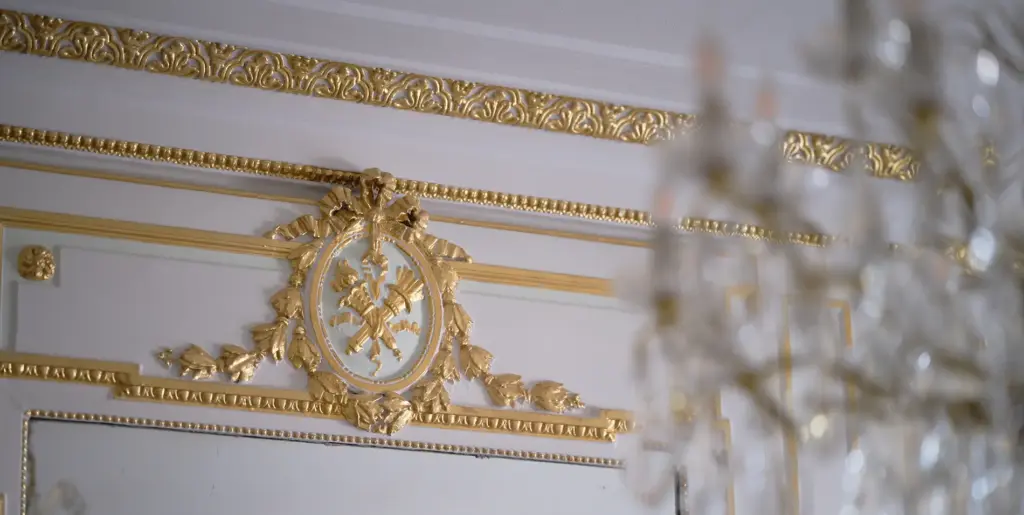
As The Ritz first opened its doors in 1906, it is vital for the heritage of the hotel that we preserve and honour the British craftsmanship that first created the intricate gold features of the hotel and enhance them for the guests of today. A key reason for our guests returning year after year is to admire and enjoy the beauty of our Louis XVI style interiors, the finishing touch of which is the inimitable shine and glow of the finest 24-carat gold. Mesmerising!
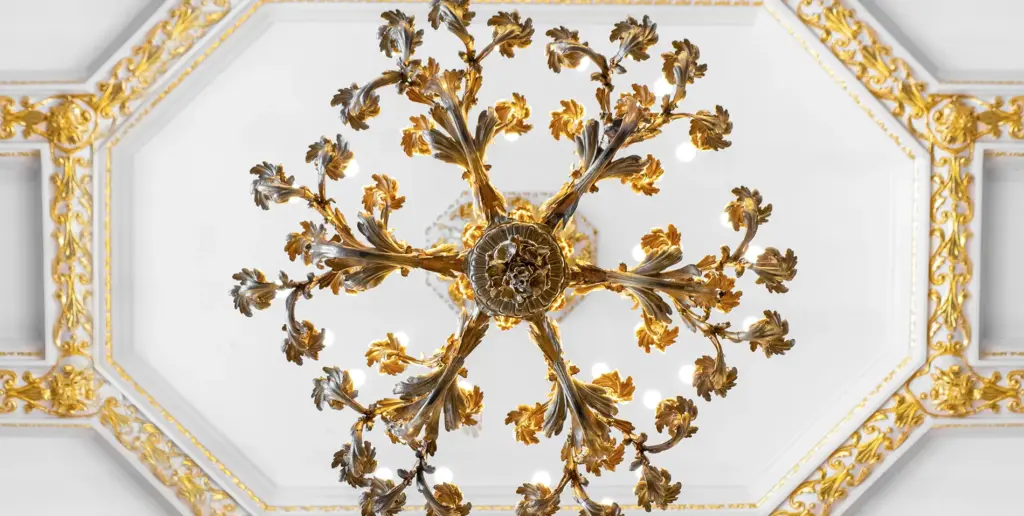
The process of gilding starts with the gilder sanding down the area that will be gilded and repairing any damage, such as chips in wood. Once this is done, the surface is painted to ensure a smooth finish, as any imperfections will be visible once the gold is applied. Next, the size is painted in an even layer over the surface. Size is the special glue that is used to stick down the gold leaf. Now comes the tricky part. The size must be left to partially dry, and the gilder must use their intuition and experience to determine the perfect moment to start the gold application. The size should be ‘squeaky’, not fully dried out as you will have missed your golden window of opportunity, but not too tacky as the gold won’t look its best in the final result. Mastering the perfect timing is a skill that takes years of experience and is essential in order to maximise the shininess of such a precious and eye-catching metal.
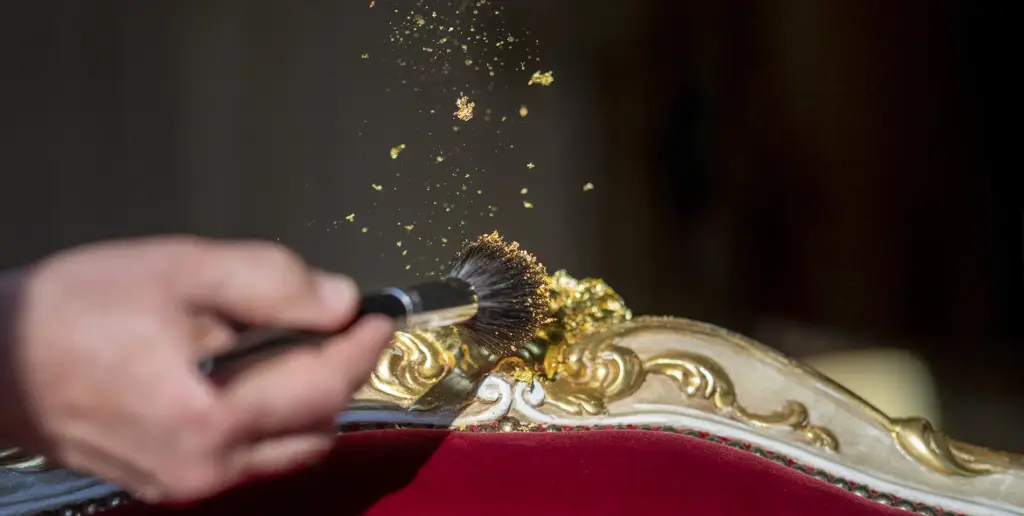
The final, and of course most crucial, step is to apply the gold or silver leaf. The gold comes in a variety of forms and the type that is used depends on what is being gilded and the environment it is in. For example, at The Ritz we use the highest quality 24-carat gold in a bright colour tone, to complement the interiors of the hotel.
Our gilder uses three types of gold: gold paint, gold leaf and gold transfer.
The first form of real gold that is used in the hotel is in its powdered form, which is used to create gold paint for use on furniture, such as bedside tables or chairs. This is the ideal form to use as these pieces of furniture are used daily, so it is easy to touch up any imperfections with a small brush if necessary. Meanwhile, our gold also comes in 24-carat sheets of gold leaf, which is very delicately applied to the surface using a fine squirrel hair paintbrush. Patience and a steady hand are a must for this type of gilding! The final iteration that is used at The Ritz is gold transfer, which comes on a sheet of paper and is then directly applied straight to the surface, which is best for use on a large, flat space.
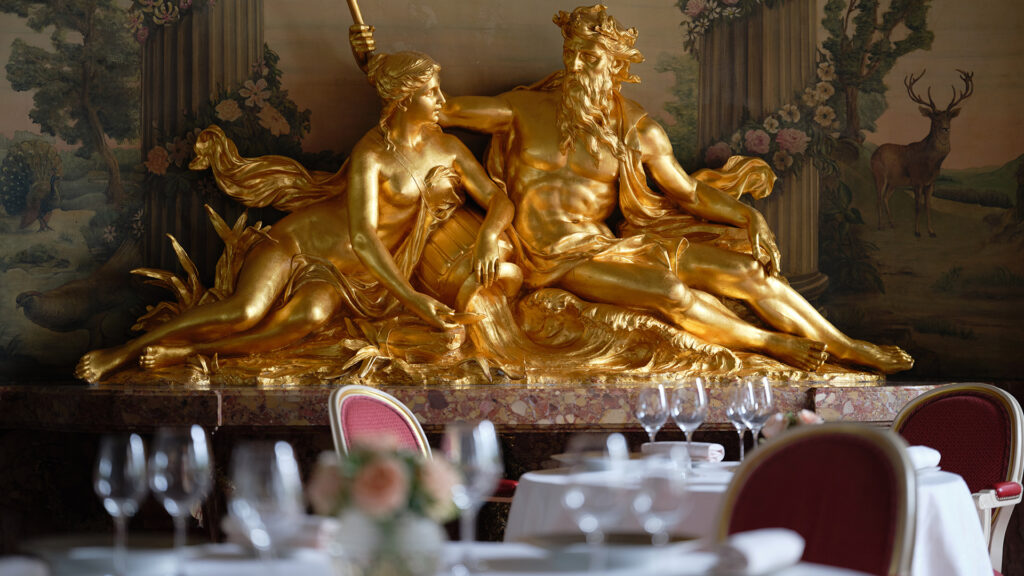
Although it may seem complex to the untrained eye, this all comes as second nature to our gilder at The Ritz, whose decades of experience and training in this artisanal craft mean the hotel’s gold and silver never dulls and always sparkles.
The History of Gilding
Gold has long been coveted as a beautiful and valuable metal, perhaps none more so than by the Egyptians. Thousands of years ago, gold was believed to be a heavenly metal by the Ancient Egyptians, and so the art of gilding began. Gold leaf was used to decorate the pharaohs’ tombs and can still be seen today by visitors of the Valley of the Kings.

Gilding was not unique to Egypt however, as the Chinese used it on pottery and wooden ornaments, while the Greeks and Romans had the Midas touch with their stunning gilded statues. Following on from the Romans, gilding was used to decorate domes, churches and palaces across Europe and remains a beloved architectural feature of some of Europe’s most famous buildings. The gilding and design of the Palace of Versailles’ iconic Hall of Mirrors was indeed an inspirational touchpoint in the design of certain rooms at The Ritz.

In more recent history, the period from approximately 1873 to 1910 is colloquially known as the Gilded Age, a term coined by the writer, Mark Twain. This term relates specifically to the great wealth in the United States of America at the time, following industrialisation and corporate growth. Twain used the term satirically to refer to the (often corrupt) tycoons who would cover their houses with gilded ornaments as a display of wealth.
Gold’s connection to divinity and wealth ensures it remains a material of fascination to us today, as much as it did to people throughout the ages. Our goal at The Ritz is to treat this precious metal with the care and respect it deserves, in honour of it giving the hotel its distinctive glow for over a century.
Our In-House Gilder at The Ritz
The Ritz London’s gilder has been working at the hotel for over 20 years and takes great pride in keeping every shimmer of gold looking its shiniest. It is a relentless task and one that takes great patience, yet thanks to his years of experience there is no statue too large or decoration too intricate that can stop him in his tracks.
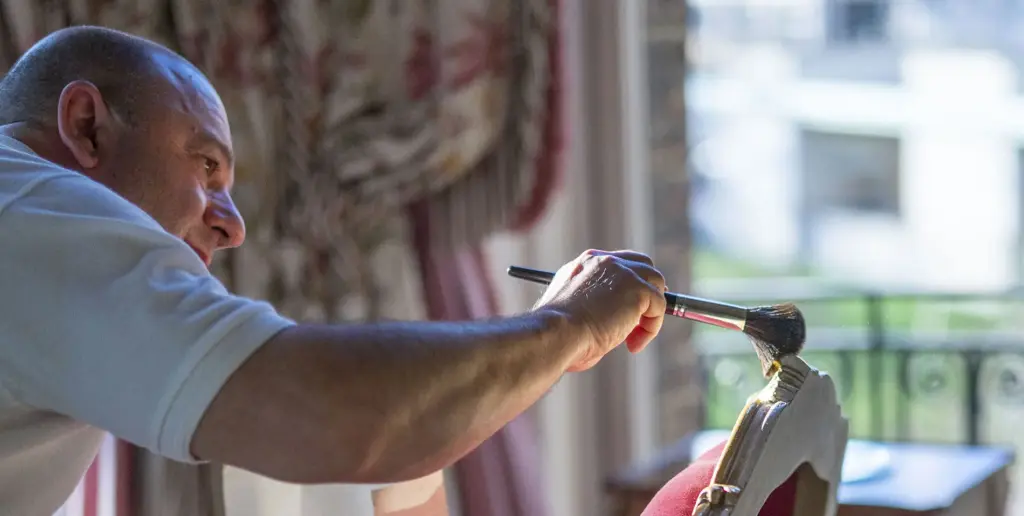
Our gilder’s favourite area of the hotel to gild is the gold fountain in The Palm Court, which is the glittering centrepiece of the room. Every guest who takes afternoon tea at The Ritz can admire his artisanal handiwork in all its golden glory during their visit. The fountain is entirely gilded using The Ritz’s signature 24-carat gold leaf, making it quite the feat of gold gilding, taking hours of precise application to achieve the final glowing result.
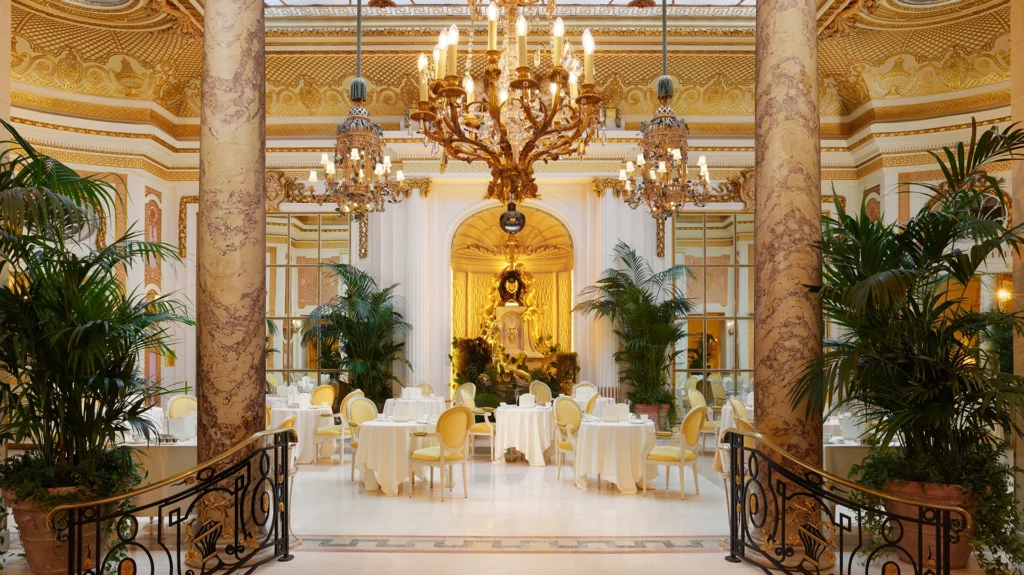
One of the more challenging areas of the hotel for our gilder to work on is one of our Signature Suites, the Trafalgar Suite. Featuring both gold leaf gilding and gilded silver across all areas of the suite, it is paramount to retain concentration to ensure every last detail of the Louis XVI style interiors are finished to perfection. The headboard of the bed is gilded every two weeks to touch up any defects and keep it looking immaculate. From the gold paint on the furniture, to gold and silver leaf on the wall embellishments, there is gilding everywhere you turn, which is vital in giving the suite its opulent ambiance.

Our gilder’s final words of wisdom for anyone who tries their hand at gilding are to always ensure the environment that you are working in is free from dust and draughts. Any spec of dust that contaminates the pristine surface where the gold is applied will ruin the final look of the gilding, while even the slightest breeze will cause the delicate gold leaf to dissipate into the air. He also advises to use caution when handling the gold leaf, as if you touch it with your fingers, it will disintegrate away! The gold and silver are simply too precious to waste.
Next time you are at The Ritz, be sure to take a moment to look up and admire the glittering gold and silver all around, attentively applied by our in-house gilder. We hope it is all the more magical now that you know all about the ancient craft of gilding.




